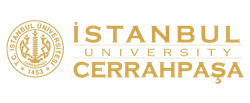Placentophagy is the consumption of postpartum placenta and its components in the modified (cooked, dried, or brewed in liquid) or unmodified (unprocessed) form by the mother herself or any other person. There are intercultural differences in disposing of the placenta. The procedures used for disposing of placenta in some cultures are deemed as protective measures for the future health of the mother, while these procedures are considered as means of healing for or as sources of various diseases in some other cultures. Some researchers suggest that placenta is quite rich in terms of various nutrients and hormones including estrogen, progesterone, lactogen, iron, β-endorphins and oxytocin, and assert that this richness remains in the placenta after the birth. Therefore, it is thought that consumption of placenta may be used as a means of restoring the mother’s nutrients and hormones lost during the birth, which makes the mother regain her postpartum mood. It is also thought that placenta consumption may support maternal-infant bonding, strengthen immunity, reduce postpartum pains, relieve tiredness and anemia, prevent postpartum hemorrhage, increase lactation and iron level, thicken hair, and heal skin texture. This review aims to draw attention of health professionals working in prenatal, delivery and postnatal services to the placenta consumption, by examining the changing rituals of consumption of placenta from past to present and discussing the possible benefits-damages of consumption of placenta in the light of up-to-date information.


.jpg)


